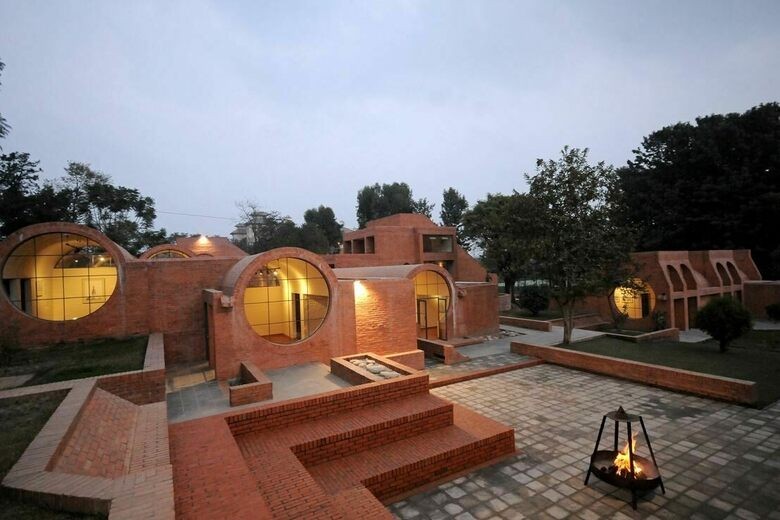The Taragaon Museum

Taragaon Museum, designed in 1972 CE as a modernist fantasy, was restored and reopened in 2014 CE as a museum. The museum houses a unique archive of more than 50 years of research by foreign artists, photographers, architects, and anthropologists on the Kathmandu Valley, with a particular focus on its heritage, alongside the display of contemporary arts. Kathmandu Triennale 2077 invited artists to plant, cultivate, and design the surrounding park, as well as to display in the museum’s modular spaces, in a discussion about gardens as sites of colonial exploitation and resistance, of contemporary and historical worlding, of utopian dreamworlds and visions of paradise, as metaphors and reality of our unravelling climate.
Humans have been creating artificial environments for as long as we have been making objects, either in the process of economically exploiting and dislocating nature or through the sophisticated manipulation of garden design. Both of these practices have always been culturally specific, similar to other art and cultural forms. Currently, the alteration of the Earth has passed a threshold where man-made landscapes seem to be the planet’s default state. While the language of ethnography and colonial-type museums, where objects and forms from different contexts have been amassed and described, attempted until recently to describe the perimeter of cultures, some cultural forms remained more elusive to this exercise. Gardens are complicated objects and some of the most untranslatable cultural artefacts, their dependence on local climate makes them difficult to move, displace and isolate, and their replication even more imprecise than that of other cultural forms. Botanical gardens in colonial centres were more preoccupied with relocating seeds and maximising their economic potential in their new location than with the plants’ complex position and meaning in their original context. Chinoiserie gardens throughout Europe were a case in point for the difficulty of replicating garden culture. At the same time, the principles of gardens as miniature images of the perfect cosmos and of our imperfect world have shaped many aesthetic universes, from textiles to architecture.
As the future is marked by our ability to negotiate – in different cultural codes – our common ownership of the global environment under the growing perspectives of both climate and political catastrophes, understanding how humans have been shaping their land and landscape will be essential.
Below is the list of artists whose artworks were presented at Taragaon Museum.
Alina Tamrakar | Anil Shahi | Artree Nepal + Urmila Gamwa Tharu | Bidhyaman Tamang | Bijay Dutta Mani + Mira Devi Dutta + Priyanka Karna | Bo Wang + Pan Lu | Chang En-Man | Cian Dayrit | Dominique Gonzalez-Foerster | Hung Fai | Katerina Teaiwa | Lok Chitrakar | Madhumala Mandal | Manjula Thakur + Madhumala Mandal + Rebati Mandal + Sudhira Karna | Naufus Ramírez-Figueroa | Rebati Mandal | Simon Soon | Subas Tamang | Sunita Maharjan | Trevor Yeung | Uriel Orlow | Vvzela Kook
View and download the PDF of the catalogue for Kathmandu Triennale 2077 exhibition here.
View the virtual exhibition for Kathmandu Triennale 2077 here.
















